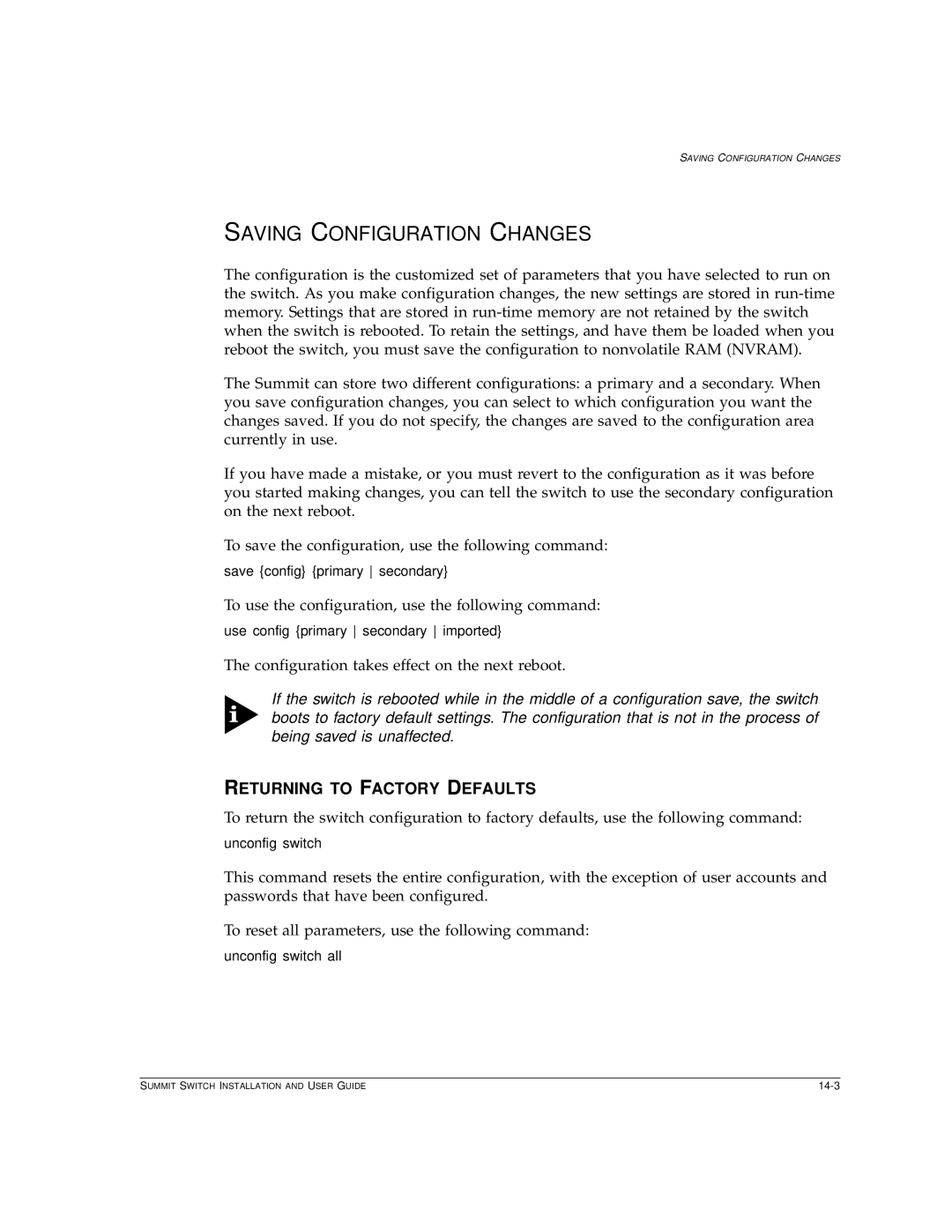
SAVING CONFIGURATION CHANGES
SAVING CONFIGURATION CHANGES
The configuration is the customized set of parameters that you have selected to run on the switch. As you make configuration changes, the new settings are stored in
The Summit can store two different configurations: a primary and a secondary. When you save configuration changes, you can select to which configuration you want the changes saved. If you do not specify, the changes are saved to the configuration area currently in use.
If you have made a mistake, or you must revert to the configuration as it was before you started making changes, you can tell the switch to use the secondary configuration on the next reboot.
To save the configuration, use the following command:
save {config} {primary secondary}
To use the configuration, use the following command:
use config {primary secondary imported}
The configuration takes effect on the next reboot.
If the switch is rebooted while in the middle of a configuration save, the switch boots to factory default settings. The configuration that is not in the process of being saved is unaffected.
RETURNING TO FACTORY DEFAULTS
To return the switch configuration to factory defaults, use the following command:
unconfig switch
This command resets the entire configuration, with the exception of user accounts and passwords that have been configured.
To reset all parameters, use the following command:
unconfig switch all
SUMMIT SWITCH INSTALLATION AND USER GUIDE |
